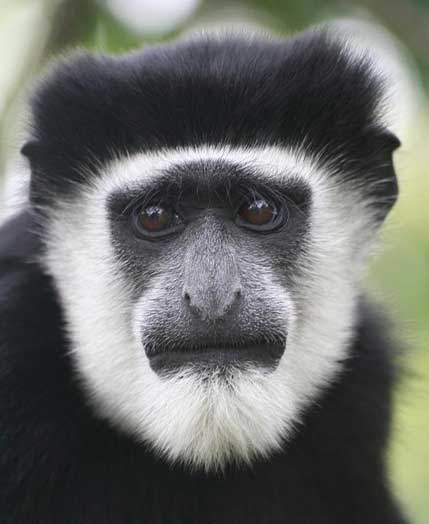Colobus Monkey
Physical Characteristics
Colobus Monkey
Diet
Colobus Monkey
Habitat
The colobus lives in all types of closed forests, including montane and gallery forests. Bamboo stands are also popular dwelling spots for the colobus.
Colobus Monkey
Behavior
Colobus monkeys live in troops of about 5 to 10 animals—a dominant male, several females, and young. Each troop has its own territory which is well defined and defended from other troops. Adult troop members, especially males, make croaking roars that can be heard resonating throughout the forest.
Fighting over mates rarely occurs. There is no distinct breeding season although most mating probably occurs during rainy season. Because a female suckles her infant for over a year, an average of 20 months passes before she gives birth again. Other troop members often handle very young infants. In the first month when the infant still has a pink face, it may be handled three to five times an hour in resting groups. Infant mortality is high even though the young are carefully tended.
The newborn colobus monkey is covered with white fur, and at about 1 month gradually begins to change color, finally gaining the black and white adult coloration at about 3 months. The infant monkey is carried on the mother's abdomen, where it clings to her fur. As it matures it spends a lot of time playing with its mother and certain other adults and at about 7 months begins playing with other juveniles. The games they play exercise their bodies, and as they get older, these develop into wrestling matches and mock displays.
Colobus Monkey
Predators and Threats
Did You Know?
- The name colobus derives from a word meaning "mutilated one" because unlike other monkeys they do not have thumbs.
- The monkeys communicate with a songlike call, a warning call and a mating call. Local tradition says they are good weather forecasters because they become silent when bad weather is coming.




No comments:
Post a Comment